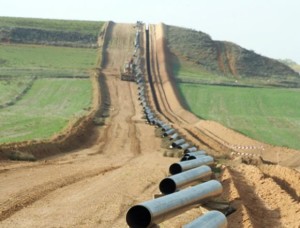Permitting problems in Minnesota are delaying Calgary-based Enbridge Energy Partners LP from building a 612-mile pipeline from North Dakota's Bakken Shale, according to the Wall Street Journal. The company disclosed the delay of the $2.6-billion Sandpiper pipeline in a filing with the U.S. Securities and Exchange Commission earlier this week.
The Sandpiper pipeline is designed to move 225,000 b/d from North Dakota to Clearbrook, MN, and then transport up to 375,000 b/d from the Minnesota location to another oil hub in Superior, Wisconsin. At the end of last year, oil giant Marathon reached an agreement whereby Marathon will fund 37.5% of the Sandpiper pipeline and gain a 27% interest in Enbridge’s North Dakota System.
Read more: Enbridge's Sandpiper Pipeline Gains Anchor Shipper in Marathon Petroleum - Open Season
The delay comes after the Minnesota Public Utilities Commission requested an expanded study on the environmental impacts of six possible routes of pipeline. Opponents to the pipeline suggest the planned route crosses many environmentally-sensitive areas in northern Minnesota, including rivers, lakes and wetlands.
At the Enbridge Annual Investment Community Conference, SVP-Major Projects Byron Neiles, said, " even though we've secured all of the required approvals in North Dakota and close to 100% of the right-of-way, and close to 90% of the -- and over 90% of the lands required in Minnesota, the regulator there three weeks ago reversed a decision it took earlier this spring denying opponents' motions to extend the process as well as to bifurcate or decouple the route and need processes of the review. Moreover, it required that these processes be conducted one after the other rather than in parallel."
The Sandpiper Pipeline is expected to be in service some time in 2017. Estimates at the end of last year were for the first quarter of 2016.
Enbridge's current five-year forecast includes a record $44-billion in capital expenditures.
Read more at wsj.com

